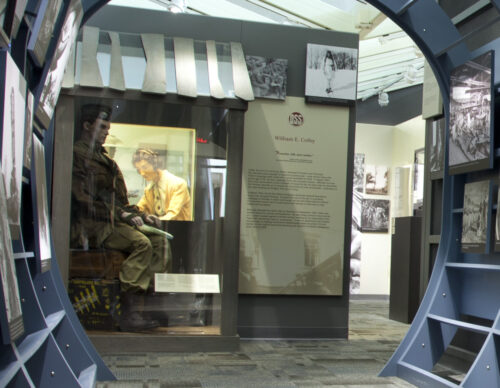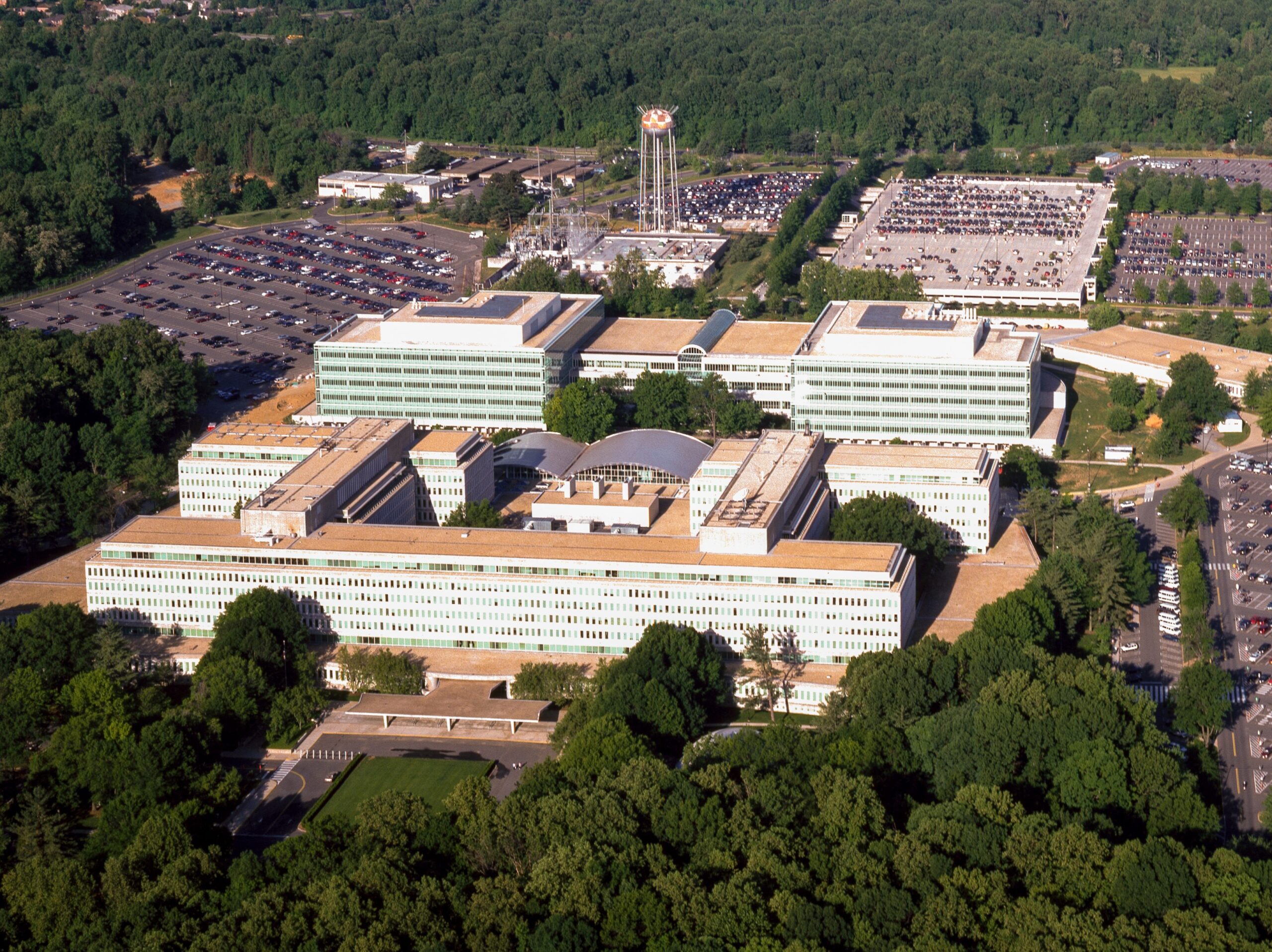Aerial view of the Central Intelligence Agency headquarters, Langley, Virginia. From the Carol M. Highsmith Archive collection at the Library of Congress.
The Central Intelligence Agency (CIA), an independent civilian intelligence agency within the executive branch of the United States, was established by the National Security Act of 1947. The Act charged the CIA with coordinating the nation’s intelligence activities and, among other duties, collecting, evaluating, and disseminating intelligence affecting national security.
Predecessors of the CIA
The history of America’s foreign intelligence gathering reaches back to the Revolutionary War. However, it wasn’t until World War II that the country’s foreign intelligence activities were coordinated government wide. Before the war, the Department of State, the Federal Bureau of Investigation (FBI), and the U.S. Armed Services were collecting intelligence with no direction or coordination.
The Office of the Coordinator of Information (COI)
On July 11, 1941, President Franklin D. Roosevelt created the Office of the Coordinator of Information (COI) due to his frustration with the piecemeal, stove-piped information he was receiving². Led by World War I hero General William “Wild Bill” Donovan, COI’s main goal was to gather foreign intelligence related to the War².
The Office of Strategic Services (OSS)
As World War II progressed, Donovan and President Roosevelt reevaluated COI’s size, organization, and mission. At Donovan’s suggestion, President Roosevelt transformed COI into a new office, the Office of Strategic Services (OSS), on June 13, 1942. Often referred to as the Agency’s forerunner, the OSS became the first centralized intelligence agency in American history. Wild Bill Donovan led the women and men of OSS to collect and analyze strategic information and conduct unconventional and paramilitary operations. At its peak, OSS employed over 13,000 military personnel and civilians—35% of whom were women.

The Strategic Services Unit (SSU)
At the end of World War II, President Harry S. Truman abolished OSS along with many other war agencies. This left the Nation without a non-departmental, strategically oriented intelligence service. On President Truman’s order, branches of OSS merged into a new office, the Strategic Services Unit (SSU), on October 1, 1945. SSU took a temporary role filling former OSS posts across the globe until the United States could put a more permanent solution into place.
The Central Intelligence Group (CIG)
Early in the new year of 1946, Administration officials decided to move SSU’s duties and responsibilities to the newly created Central Intelligence Group (CIG). Unlike previous organizations of its kind, CIG was granted the authority to conduct independent research and analysis.
The Birth of the CIA
After much discussion and debate over structure, Truman finally signed the National Security Act in September 1947, which gave birth to the CIA. The Act established the CIA as an independent, civilian intelligence agency within the executive branch. The Act charged the CIA with coordinating the Nation’s intelligence activities and, among other duties, collecting, evaluating, and disseminating intelligence affecting national security.
The foundation of the CIA marked a significant shift in the United States’ approach to intelligence, centralizing activities that had previously been scattered across various departments and agencies. Today, the CIA continues to play a crucial role in the nation’s security and foreign policy.
Resource
Central Intelligence Agency
CIA.gov
*The views and opinions expressed on this website are solely those of the original authors and contributors. These views and opinions do not necessarily represent those of Spotter Up Magazine, the administrative staff, and/or any/all contributors to this site.
